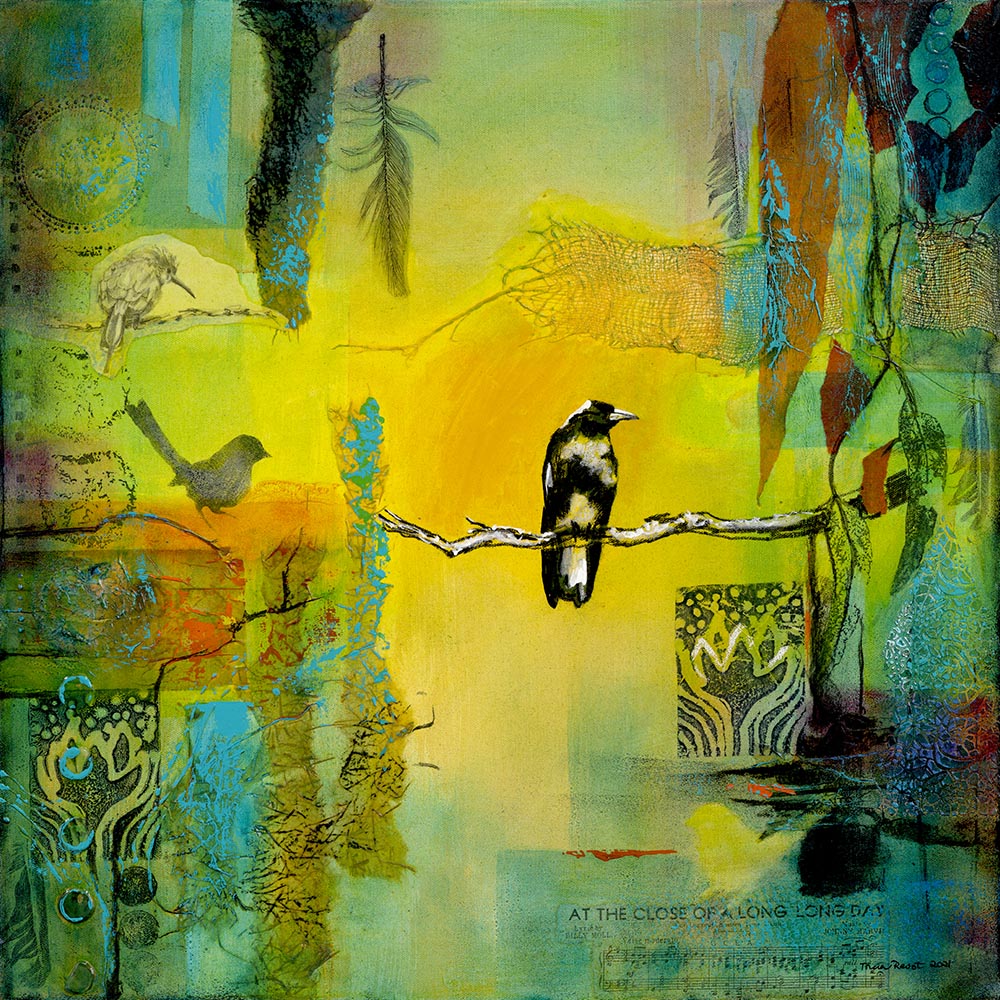Whether an acrylic pigment is transparent or opaque usually is indicated through a symbol on the tube.For Atelier, it is a circle (as in the photo below), for Matisse a square etc. If there is no symbol, the information will be on the label somewhere.
An opaque pigment will cover the surface so there is nothing showing through (depending on the thickness of the layer) – indicated by the solid circle on the Yellow Ochre paint tube above; a transparent pigment will be sheer and show what is underneath (depending on the intensity of the layer) – indicated by the empty circle on the Red Gold tube. Other pigments that share these characteristics are shown in a half-and-half circle, as indicated in the Cerulean Blue tube.
In the painting above, the flat area of paint in the sky was achieved with opaque colour (an apricot mixed by combining Red Gold, Quinacridone Magenta and Titanium White); this was then glazed with a Cadmium Yellow Light mixed with Middle Medium. In the foreground, the flat Yellow Ochre field was glazed with Red Gold and other colours to achieve the movement in the field.
Transparent pigments enable clear glazing of colour (see my free video on glazing – there is a link on the home page of my web site triciareust.com.au) but any acrylic pigment can be glazed by adding Middle Medium (or Clear Painting Medium) though the opaque pigments will have a more cloudy appearance than transparent ones.
Transparent colours can be vibrant (Quinacridone Magenta) and staining (Pthalo Green) and when mixed with white make bright opaque colours eg., mixing Quinacridone Magenta and Titanium White makes a vibrant hot pink. As soon as a transparent colour is mixed with an opaque, the transparency is lost. Knowing which pigments are opaque and which are transparent is invaluable in your painting practice. In “Righteous Presence” below, transparent colours were necessary in order to reserve the elements of the collage underneath the layer of colour.
As well as the instructional video on glazing, there is more information in my book “Using Chroma Art Materials” available for purchase from the home page on my web site.



